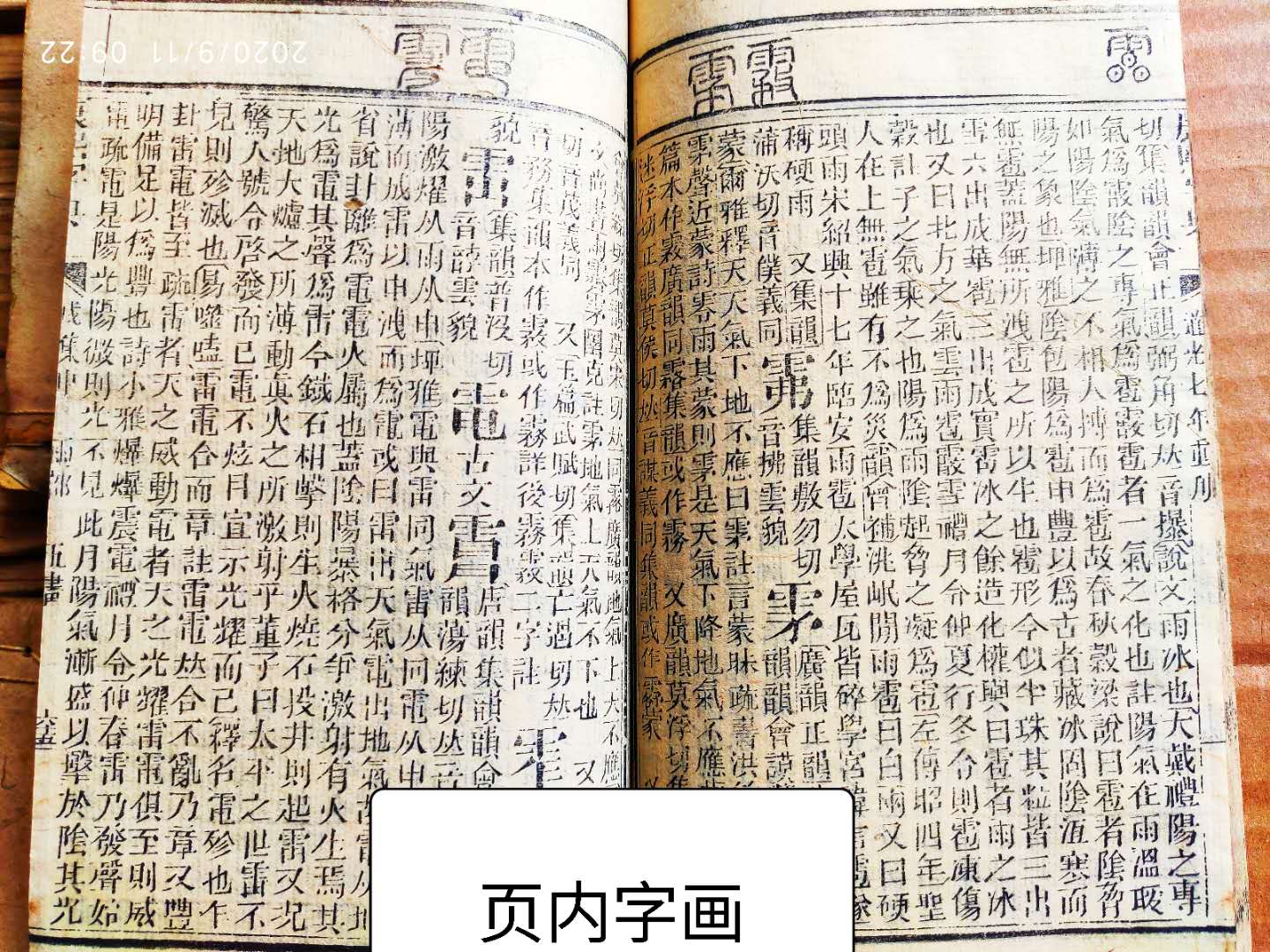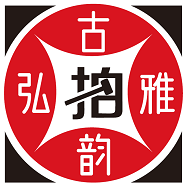《康熙字典》是 清代 康熙年间出版的图书,作者是 张玉书 、 陈廷敬 等,它是在明朝 梅膺祚 《 字汇 》、 张自烈 《 正字通 》两书的基础上加以增订的。该书的编撰工作始于 康熙四十九年 即公元 1710年 ,成书于康熙五十五年即公元 1716年 ,历时六年,因此书名叫《康熙字典》。《康熙字典》由总纂官 张玉书 、 陈廷敬 主持,修纂官凌绍霄、 史夔 、 周起渭 、 陈世儒 等合力完成。字典采用部首分类法,按笔画排列单字,字典全书分为十二集,以十二地支标识,每集又分为上、中、下三卷,并按韵母、声调以及音节分类排列韵母表及其对应汉字,共收录汉字四万七千零三十五个(47035个),为汉字研究的主要 参考文献之一。
Kangxi Dictionary is a book published during the Reign of Emperor Kangxi in the Qing Dynasty by Zhang Yushu and Chen Tingjing. It is updated on the basis of mei Yingzuo's Chinese characters and Zhang Zilie's Zhengzi Tong in the Ming Dynasty. The compilation of the book began in 1710 AD, the forty-ninth year of The Reign of Emperor Kangxi, and was completed in 1716 AD, the fifty-fifth year of the reign of Emperor Kangxi, which took six years. Therefore, the book is called Kangxi Dictionary. Kangxi Dictionary was presided over by Zhang Yushu and Chen Tingjing, and completed by Ling Shaoxiao, Shi Kui, Zhou Qi Wei and Chen Shilu. Dictionary use radical classification, according to the stroke order words, the dictionary is divided into 12 episodes, to the twelve earthly branches, each episode is divided into the upper, middle and under the three volumes, and according to the finals and tones and classification arrangement are as table and the corresponding Chinese characters, forty-seven thousand and thirty-five (47035) included in the Chinese character, one of the main reference for the research of Chinese characters.

《康熙字典》的版本非常多,有康熙内府刻本,也就是所说的武英殿版本。包括有两种纸本:开化纸和太史连纸两种。康熙内府刻本多是内廷赏赐用的,装订非常豪华,民间很少见到。此外还有道光七年的内府重刊本、其他木刻本,以及清末出现的石印本、铅印本、影印本。清末上海同文书局增篆石印本是发行量最大、最流行的一种版本。康熙四十九年,清圣祖康熙皇帝召集张玉书、陈廷敬等三十位学者,开始了《康熙字典》的编撰工作,在六年的时间里,他们对传统字书进行了大规模的集中整理,并于康熙五十五年完成编辑工作。《康熙字典》吸收了历代字书编纂的经验,全书共分为十二集,从子集到亥集,每集又分为上、中、下三卷,分别排列214个部首。总共收录了四万七千零三十五个字。内容引用了古代诗文以追溯字源,同时还注明了历代的用法以佐证其变迁。《康熙字典》问世后,社会影响巨大。它的文字、音义、书证被广泛引用,它的体例也成为了后世出版字书的蓝本。作为中华文化的重要参考文献之一,《康熙字典》具有极高的研究价值。
There are many versions of The Kangxi Dictionary, including the Kungfu copy, also known as the Hall of Martial Valor. There are two kinds of paper including: civilized paper and Taishi paper. Kangxi palace engravings are more than the imperial court gifts, binding is very luxurious, rarely seen among the people. In addition, there are seven years of Daoguang Nei Fu reprint, other wood-block, as well as the late Qing appeared in lithography, printing, photocopies. At the end of The Qing Dynasty, Shanghai Bureau of Lithography zengzhuan is the largest circulation, the most popular version. In the forty-ninth year of Kangxi, emperor Kangxi, the holy ancestor of the Qing Dynasty, summoned thirty scholars including Zhang Yushu and Chen Tingjing to begin the compilation of Kangxi Dictionary. In six years, they organized traditional Chinese characters on a large scale and completed the compilation in the fifty-fifth year of Kangxi. The Kangxi Dictionary absorbs the experience of compiling Chinese characters in previous dynasties. The book is divided into 12 volumes, from The first to the second, and each volume is divided into three volumes, 214 parts respectively. A total of 47,035 words are included. It cites ancient poems to trace the origin of the word, and also notes the usage of the past generations to support its changes. After kangxi Dictionary appeared, the social influence was enormous. Its characters, sounds, meanings and documentary evidence are widely cited, and its style has become the blueprint of later published calligraphy. As one of the important references of Chinese culture, Kangxi Dictionary is of great research value.
该刻本经历三百年之久,饱经风霜,纸张包浆氧化明显,材质天然,表面肌理错落有致;主体内容保存完整丰富,字迹规整有力,层次清晰分明,实属难得。该刻本隶属文光堂和宝华楼刻印,在当时是赠与各地州府、大臣,相当珍贵。由于刻本数量有限,现如今,成为不可多得的文献
After 300 years of experience, weathered, paper pulp oxidation obvious, natural material, surface texture strewn at random; The main content of the preservation is complete and rich, the writing is neat and powerful, the level is clear, it is rare. This engraving belongs to Wenguang Tang and Baohua Lou engravings, at that time was a gift to all the state capitals, ministers, very precious. Due to the limited number of copies, today, it has become a rare text









